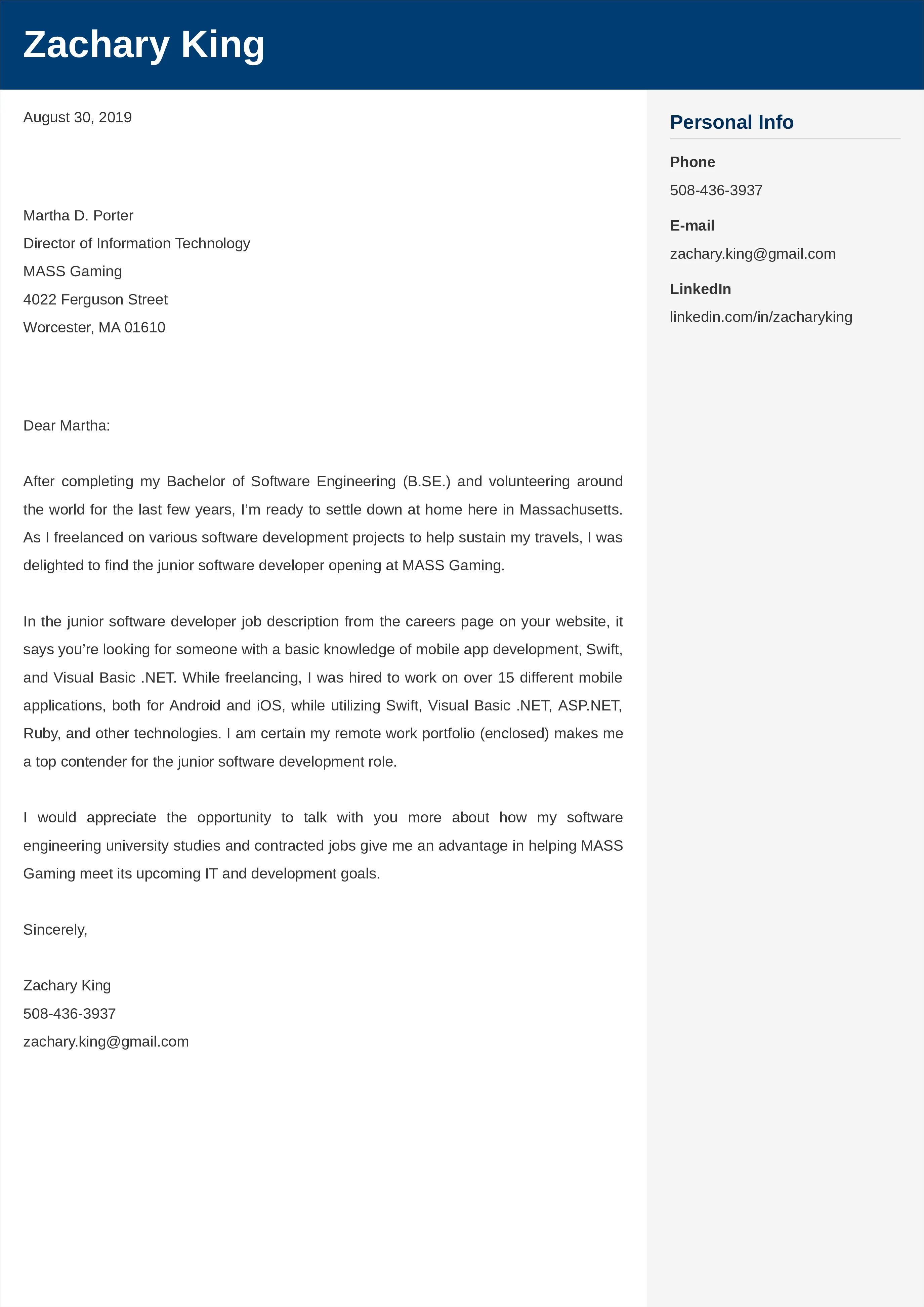Cover Letter Computer Engineering Basics
A cover letter is a crucial document that accompanies your resume when applying for computer engineering positions. It serves as your introduction to the potential employer and provides an opportunity to elaborate on your qualifications, skills, and experiences that align with the specific job requirements. A well-crafted cover letter can significantly increase your chances of securing an interview by showcasing your enthusiasm, personality, and suitability for the role. It is more than just a formality; it’s your chance to make a strong first impression and differentiate yourself from other applicants. Failing to submit a cover letter, or submitting a poorly written one, can be a costly mistake, potentially leading to your application being overlooked.
Understanding the Purpose
The primary purpose of a computer engineering cover letter is to persuade the hiring manager that you are the ideal candidate for the position. It’s a personalized narrative that complements your resume, highlighting the most relevant aspects of your background and demonstrating how your skills and experiences align with the employer’s needs. Your cover letter should not simply restate your resume; instead, it should expand on your qualifications and provide context, showcasing your passion for computer engineering, your understanding of the company, and your enthusiasm for the specific role. It’s also an opportunity to briefly explain any gaps in employment or career changes, if necessary.
Key Components of a Cover Letter
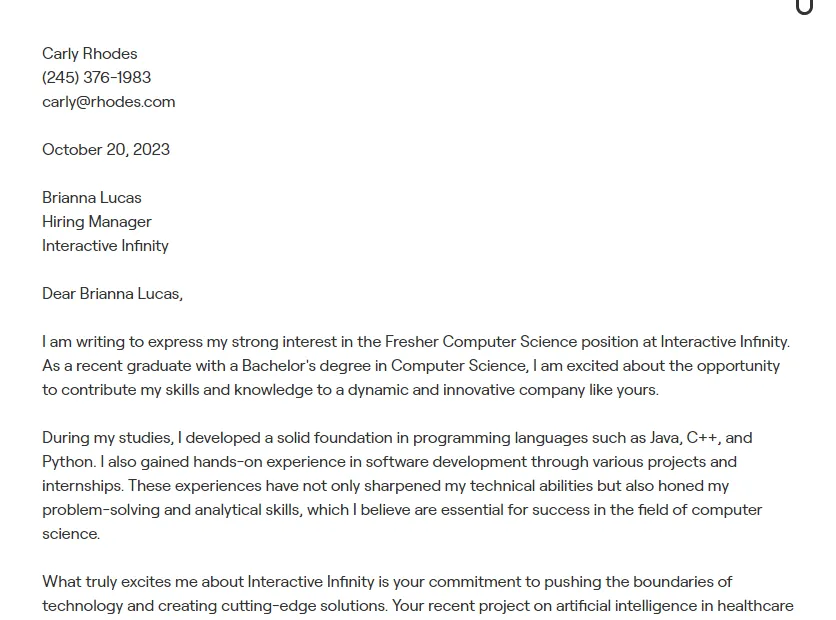
A well-structured computer engineering cover letter typically includes several key components. First, begin with a professional header that includes your contact information and the date. Then, address the hiring manager by name, if possible; this demonstrates that you have taken the time to research the company. Next, the introduction should immediately grab the reader’s attention by stating the position you are applying for and briefly mentioning why you are a strong candidate. The body of the letter should elaborate on your skills and experiences, providing specific examples that highlight your accomplishments. Finally, conclude with a call to action, expressing your interest in an interview and thanking the reader for their time and consideration.
Formatting Your Cover Letter
The formatting of your computer engineering cover letter is critical to its readability and professionalism. Use a clean, easy-to-read font such as Times New Roman, Arial, or Calibri, with a font size between 10 and 12 points. Maintain consistent margins (typically 1 inch on all sides) and use single spacing within paragraphs and double spacing between paragraphs. Break up large blocks of text with concise paragraphs and bullet points to enhance readability. Ensure your letter is no more than one page in length, as hiring managers often have limited time to review applications. Proofread meticulously for any grammatical errors or typos before submitting your application. Consider using a professional cover letter template to ensure a polished and organized presentation.
Crafting a Strong Cover Letter for Computer Engineering
Highlighting Your Skills and Experience
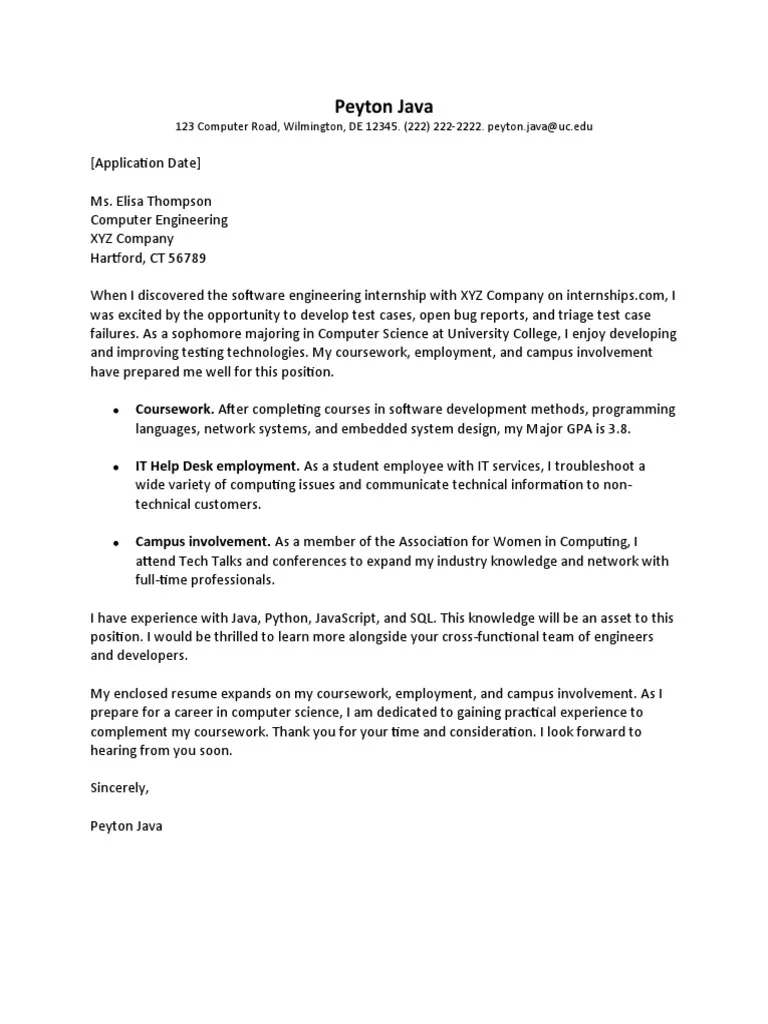
In your computer engineering cover letter, clearly articulate your relevant skills and experiences. Focus on the skills and qualifications that directly align with the job description. Provide concrete examples of how you have applied these skills in the past. Mention specific projects you have worked on, technologies you are proficient with (e.g., programming languages, hardware design tools), and any relevant certifications or coursework. Quantify your achievements whenever possible to demonstrate the impact of your work, such as improving system performance, reducing costs, or increasing efficiency. Tailor your skills to the specific requirements mentioned in the job posting, using keywords and phrases from the description to make your letter more relevant.
Quantifying Your Achievements
Whenever possible, quantify your achievements to demonstrate the impact of your work. Use numbers and data to show how you have contributed to past projects and how you can bring value to the potential employer. For instance, instead of stating that you ‘improved system efficiency’, specify by what percentage you improved it. Did you reduce debugging time by 30%? Did you increase the speed of a certain process by 15%? Did you contribute to a project that saved the company $10,000? Such details make your accomplishments much more impactful and memorable. It shows that you are not only capable but also results-oriented and focused on delivering tangible outcomes. This is especially important in computer engineering, where performance and efficiency are paramount.
Tailoring Your Letter to the Job
A generic cover letter that is not tailored to the specific job and company is unlikely to impress a hiring manager. Before writing your computer engineering cover letter, thoroughly research the company, its values, and the specific requirements of the position. Carefully read the job description and identify the key skills and qualifications the employer is seeking. Use this information to customize your letter, emphasizing how your skills and experience directly address those needs. Demonstrate your knowledge of the company by referencing their projects, products, or services, and explain why you are excited about the opportunity to contribute to their team. This level of personalization shows that you have taken the time to understand the role and the organization, which is a strong indicator of your genuine interest.
Cover Letter Examples
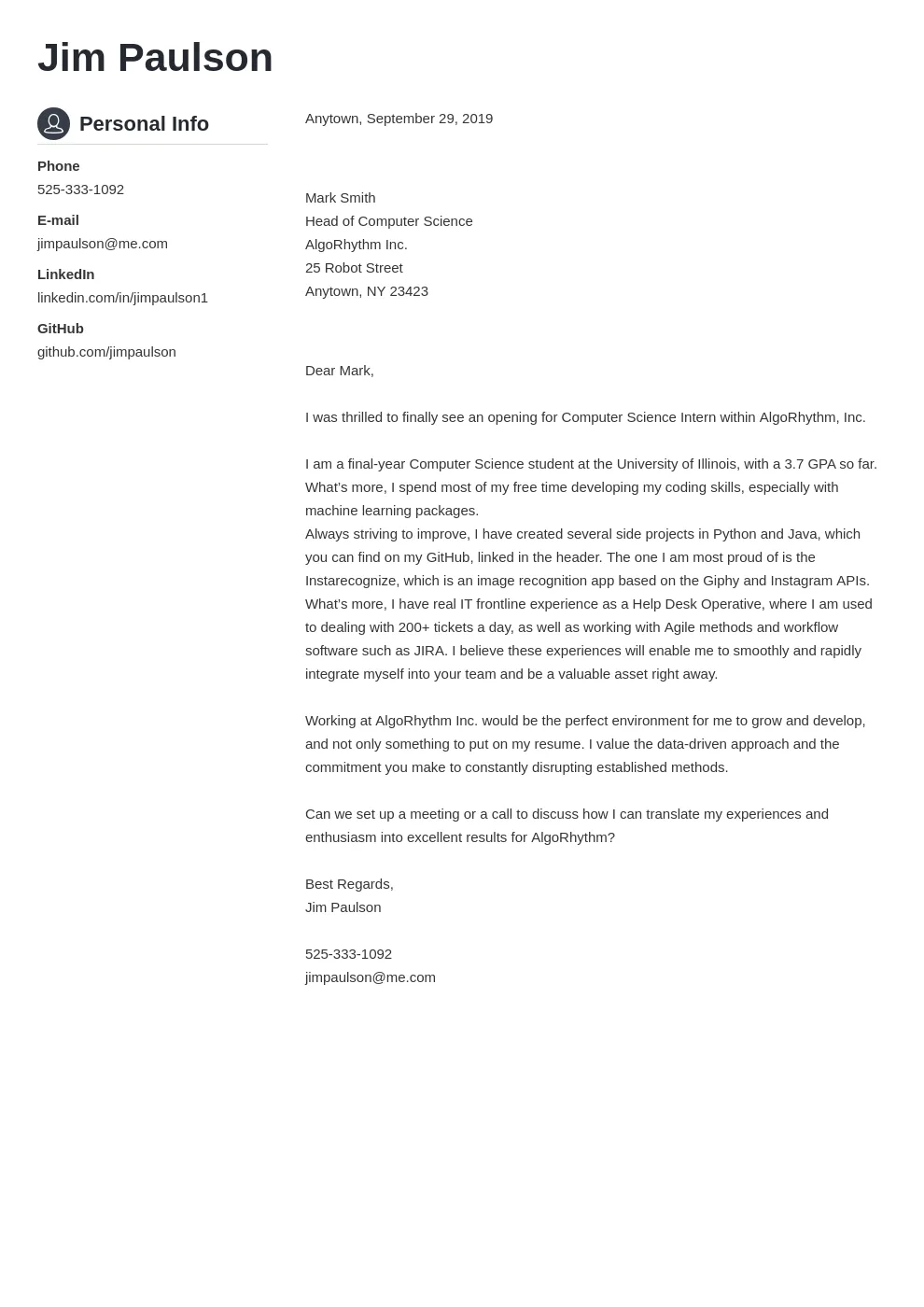
Cover Letter Template for Computer Engineering
Dear [Hiring Manager name],
I am writing to express my keen interest in the Computer Engineer position at [Company name], as advertised on [Platform]. With [number] years of experience in [relevant areas], I am confident in my ability to contribute significantly to your team.
In my previous role at [Previous company], I was responsible for [Key responsibilities]. I successfully [quantifiable achievement], and I am proficient in [Relevant skills and technologies]. My expertise in [Specific area] aligns well with the requirements of this role, and I am eager to apply my skills to [Company’s goals].
I am particularly drawn to [Company name] because of [Company values or projects]. I am excited about the prospect of [Specific tasks or contributions]. My resume provides further details on my qualifications, and I am available for an interview at your earliest convenience.
Thank you for your time and consideration. I look forward to hearing from you soon.
Sincerely, [Your Name]
Analyzing Successful Cover Letters
Successful computer engineering cover letters are characterized by several common elements. First, they are well-organized and easy to read, with a clear and concise structure. They begin with a strong opening that immediately grabs the reader’s attention and clearly states the position being applied for. The body of the letter provides compelling examples of relevant skills and experiences, quantified whenever possible. Successful letters also demonstrate a strong understanding of the company and the specific requirements of the job. They are tailored to the particular role and showcase the applicant’s genuine interest in the company. Finally, they end with a strong call to action, inviting the hiring manager to schedule an interview and expressing gratitude for their time. Reviewing successful cover letter examples can offer valuable insights into effective writing techniques.
Cover Letter Mistakes to Avoid
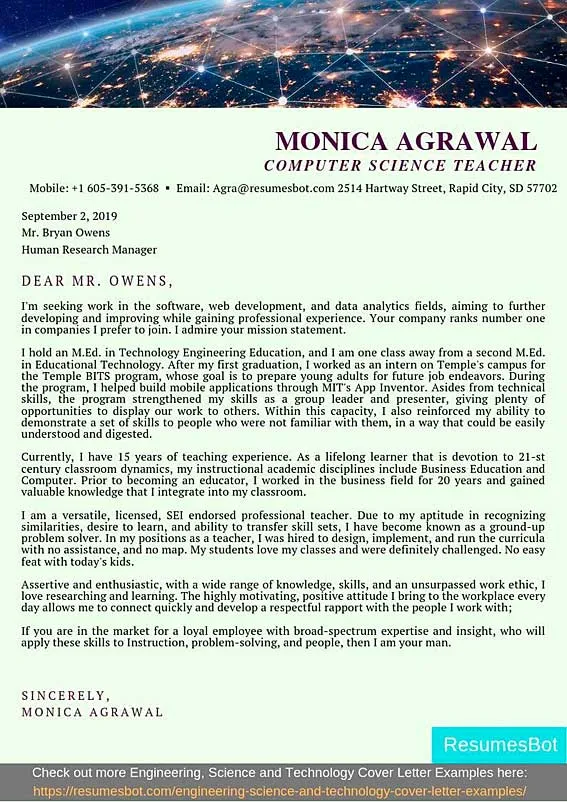
Typos and Grammatical Errors
Typos and grammatical errors can undermine your credibility and create a negative first impression. Always proofread your computer engineering cover letter carefully before submitting it. Use spell-check and grammar-check tools, but also read the letter yourself to catch any mistakes that the software might miss. Ask a friend or colleague to review your letter as a fresh set of eyes can often spot errors you may have overlooked. Ensure that your sentences are clear, concise, and grammatically correct. Errors in your cover letter suggest a lack of attention to detail, which is a critical quality in computer engineering. Make sure you have the correct names and company names.
Generic and Unenthusiastic Language
Avoid using generic and unenthusiastic language in your computer engineering cover letter. Phrases like ‘I am a hard worker’ or ‘I am a team player’ are vague and do not provide any specific information about your skills or experiences. Instead, use strong, active verbs and provide concrete examples to support your claims. Demonstrate your enthusiasm for the position and the company. Show that you are passionate about computer engineering and that you are genuinely interested in the opportunity. A cover letter filled with generic phrases makes you sound like any other applicant, and you are not differentiating yourself. Tailor your letter to the specific job posting and show how excited you are to contribute to the company’s projects.
Ignoring Job Requirements
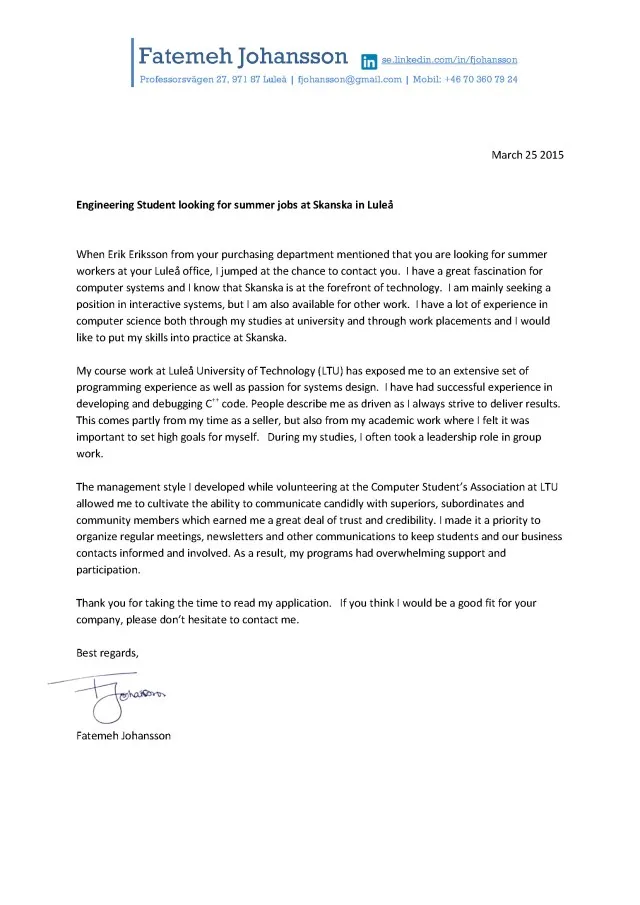
One of the most common mistakes in cover letters is ignoring the specific requirements of the job. Carefully read the job description and address each of the required skills, qualifications, and experiences in your letter. If the job posting emphasizes proficiency in a specific programming language or familiarity with a particular software tool, make sure to highlight your experience with those technologies. Failing to address the requirements can lead to your application being immediately rejected. It demonstrates that you have not taken the time to understand the position and the employer’s needs. Customize your cover letter to show how your skills align directly with the job requirements, and you’ll significantly increase your chances of landing an interview.
The Closing and Follow-Up
Writing a Compelling Closing Statement
Your closing statement should reiterate your interest in the position and express your enthusiasm for the opportunity. Make it clear that you are eager to learn more and discuss how your skills and experience can benefit the company. Use a call to action, such as ‘I am available for an interview at your earliest convenience’ or ‘I look forward to hearing from you soon.’ Thank the hiring manager for their time and consideration. Avoid generic closing statements, such as ‘Thank you for your time.’ Instead, personalize it to reflect your excitement about the specific role and the company’s mission. Your closing should leave a positive lasting impression.
Following Up After Submission
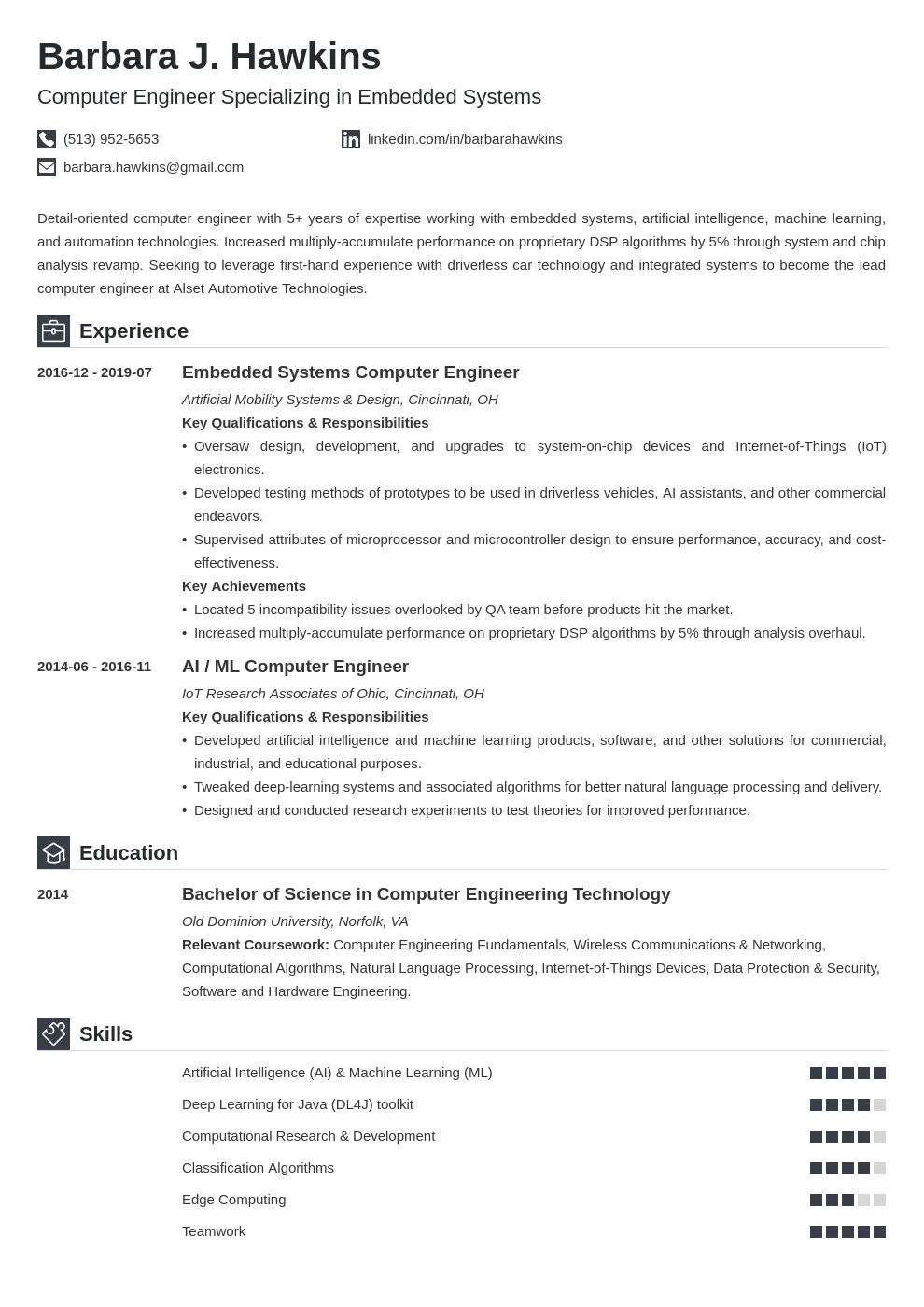
After submitting your computer engineering cover letter and resume, consider following up with the hiring manager or recruiter, typically within one to two weeks. This shows your continued interest in the position and allows you to reiterate your qualifications. You can follow up via email, briefly mentioning the position you applied for and expressing your enthusiasm for the opportunity. Inquire about the status of your application and reiterate your availability for an interview. However, avoid being overly persistent or sending multiple follow-up emails, as this could be perceived as annoying. A polite and professional follow-up can help ensure that your application is not overlooked and can demonstrate your proactive approach to the job search.
